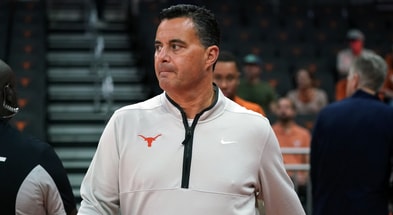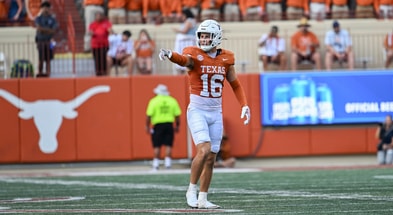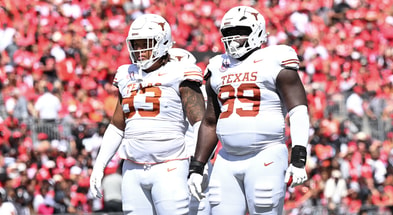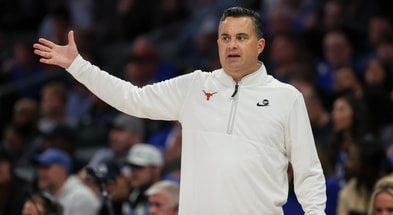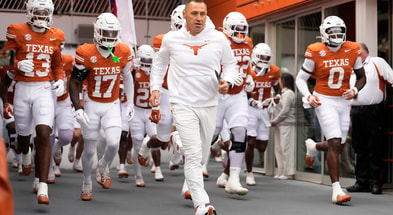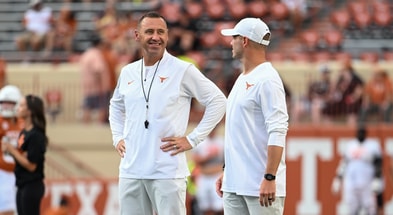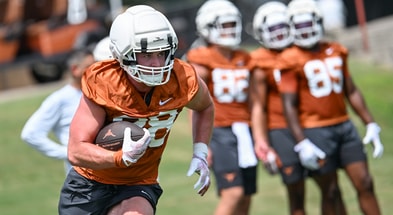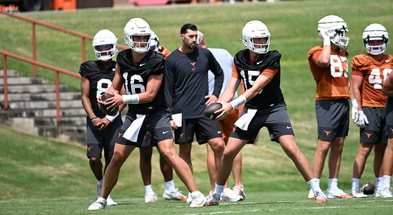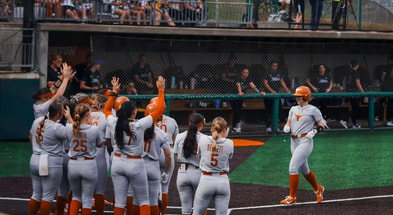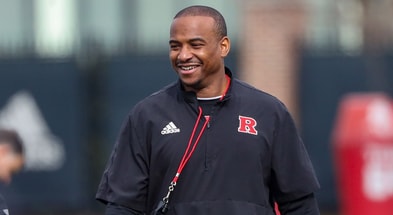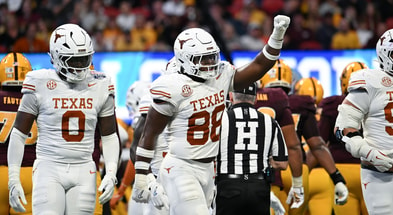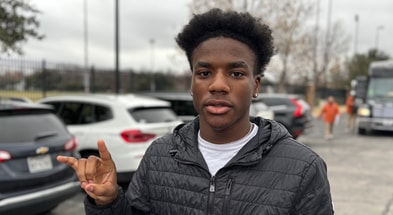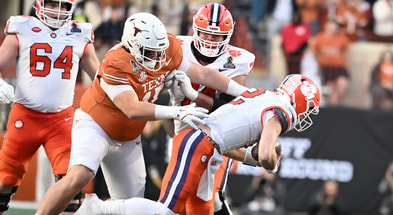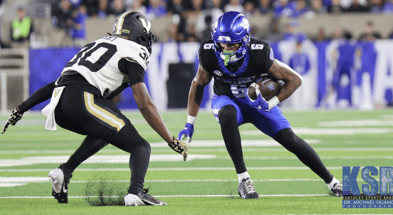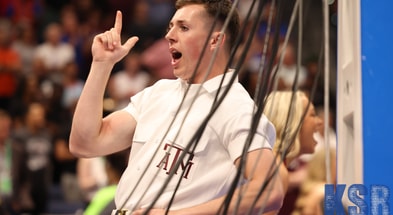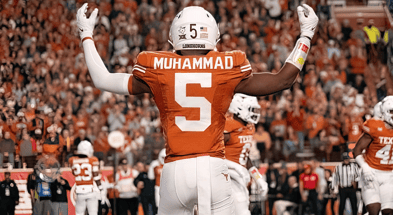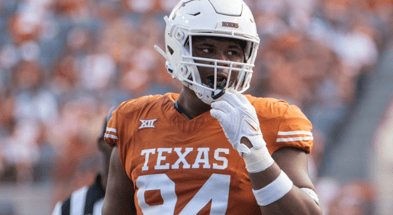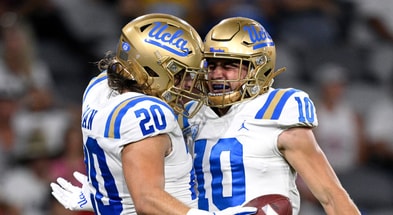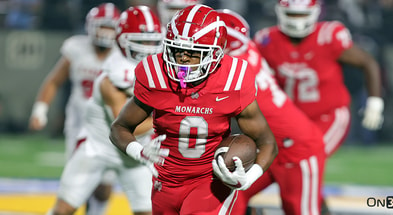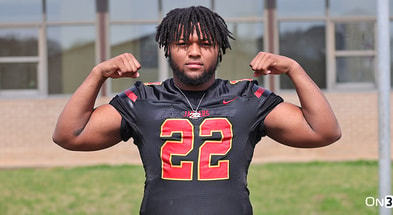The Main Event: 1965 Orange Bowl vs. Alabama
Three of the four pre-2006 bowl games that the Texas Longhorns played in with perhaps the most interested national television audiences were the 1964 Cotton Bowl versus Navy, the 1970 Cotton Bowl versus Notre Dame and the dramatic 2005 Rose Bowl versus Michigan. The fourth one might surprise you.
It pitted two of college football’s coaching legends going against each other and was the first major televised bowl game at night. It was the Friday, January 1, 1965 Orange Bowl, Alabama versus Texas. I was in my second year on the Texas staff, having finished my playing days in the 1963 Cotton Bowl game in the Texas versus LSU matchup. I was on the sidelines for both the ’64 and ’65 exciting bowl games. In the ’64 Cotton Bowl, I stood about 10 yards behind coach Darrell Royal when the CBS announcer asked him to respond to Navy coach Wayne Hardin’s remark that “when the challenger beats the champion then they are the champions.” I was close enough to see coach Royal’s neck turn red and hear him say over the stadium’s public address system and to the millions watching, “We’re ready.” Number 2 Navy went down 28-6, and it could have been worse. But the 1965 Orange Bowl in Miami was entirely different. The Alabama Crimson Tide were undefeated and had college football’s most exciting player at quarterback, one Joe Namath. He was not another Roger “the Dodger” Staubach, which meant Namath, who had suffered a knee injury, did not pose a threat to run. In fact, Coach Paul “Bear” Bryant told the press he doubted if Namath could even play. The starter would be Steve Sloan, an option quarterback who threw passes from play action. Earlier that season, Texas had lost 14-13 to the Arkansas Razorbacks in Austin. Coach Royal went for two points and the win and the alert Razorback defense snuffed out the flare pass to San Antonio’s Hix Green. Otherwise, Texas would have been in the Cotton Bowl playing for the national championship. But for the first time, the Football Writer’s Association of America and the Helms Foundation decided to wait until after the bowl games to name a national championship team, which would start a trend from that year on and added to the importance of the Orange Bowl contest featuring the undefeated Crimson Tide. The week before we broke for Christmas, our emphasis was on Bama’s running game and its wicked play action passes. I ran the scout team against the Texas defense under the watchful eyes of Mike Campbell. Campbell would stand over on the scout team side of the scrimmage line so he could see the recognition of plays by his Longhorn defenders. He would stare at junior linebacker Tommy Nobis’ eyes checking if the big rawboned redhead was picking up the speed of Alabama’s speed option and not overrunning the quarterback.
If Campbell didn’t like the execution of my scout team or the reaction of the defensive players, it was “run it again,” or he would let us run several plays and walk over to me and, between tobacco spits, let me know I was to run the troublesome play again. We were not on a time schedule as such and the masterful defensive coordinator would stretch practice out until he was satisfied. Twice that week Coach Royal came over to watch without saying a word except to encourage the efforts he was observing. We were at full speed blocking and “thud” tackling, which meant Tommy Nobis would run through blockers and wrap up the ball carriers, which resembled sighting in a .30-.30 rifle. By the time we arrived in Miami, our workouts were once a day without full pads and we paid specific emphasis to the kicking game, which coach Royal took full control over. That was his baby, and there were times when he challenged our punter Ernie Koy to a coffin corner punting contest. Royal never lost. In the afternoons, I “babysat” with the Campbell’s three boys — Rusty, Mike and Tom. I let them get away with a lot. They were smart and loved the beachfront hotel where we were staying. I must confess, I let them play in the warm shallow beach area while I kept a close eye on the young ladies that were sunbathing or walking along the shore. The boys survived my less than close surveillance of their activities and Mike and Tom lived to help Texas win its second national championship in that Cotton Bowl of 1970. Two days before the game, the Texas and Alabama teams split up in groups and fished for sharks. It was our boat, with tight end/defensive end Pete Lammons and split end George Sauer, that caught the largest and heaviest shark. To this day I can still remember the smell when they cut the shark’s stomach open. The sucker was more dangerous dead than alive! On January 1, 1965, we had all day to sit through football morning meetings and the bowl games on television. The Razorbacks defeated Nebraska in the Cotton Bowl and it seemed strange watching someone win in “our” place, since the Longhorns had played in the game in 1960, 1962, 1963 and 1964. A heavy rain shower moved through the Miami area in the afternoon before our game. I mean a gully washer. You could not see across the parking lot in front of the hotel. All week long there were comparisons made between the Southwest Conference and the Southeastern Conference. Over and over, quotes from Royal and Bryant were used in and out of the context of the game itself, and one Coach Royal put one on the blackboard from Coach Bryant just before the Longhorns took the field. Imagine this: the pre-fame warm-ups are over. The Orange Bowl is jam-packed with the crimson of Alabama on the press box side of the stadium and the Burnt Orange and White of Texas spread from the sidelines to the huge lights on top of the deck on our side. The field was wet but the footing was good. There seemed to be a special excitement in the air. All the other bowl games were finished; there was no doubt that this was the main event. In the lockerroom, all the Longhorns sat on benches facing a single rectangular green blackboard underneath the stands full of Longhorn fans. Royal, dressed in a short sleeve white shirt with a black tie, goes to the board and with a steady and incredibly legible hand wrote the following: “Nobody lives as tough as we do” — P. Bryant This was one of the quotes which had appeared in the Miami papers during the week. Royal moved to the water cooler and got himself a drink, letting the message sink in. I stood near Nobis and watched the redhead clinch his jaw, while a couple of the linemen across the room put on their headgear. Royal then returned to the board and in big letters, underneath Bryant’s quote, wrote this: “B.S.” — DKR That’s all. He turned around, his football team was on its feet, and the only words I heard Darrell Royal say were, “Let’s go!” Before the wishbone, Texas won its first national championship in that 1964 Cotton Bowl against Navy with the flip-flop wing-T. It was a beautiful offense built around simplicity in execution and the Texas power sweep, which was a throw back to the old Tennessee pitch sweep from a single wing formation. Royal and line coach Jim Pittman had added a unique mixture of trap and counter plays with the dangerous dive option threat away from the wing side. That’s what the Crimson Tide was up against in Miami. Early in the Orange Bowl, ‘Bama tried to run a crossing stunt between its outside linebacker and defensive end against the Texas wing side. Pittman’s wonderfully coached offensive line picked up the maneuver perfectly and on the Longhorns’ base play — “18 pitch” — Ernie Koy broke on a 79-yard touchdown run down the Texas sideline. It stunned Alabama. Steve Sloan and the ‘Bama offense did not do better against the Texas defense than my scout team. Nobis, linebacker Tim Doerr and Fred Edwards were shooting through gaps to smash Bama’s backs and the Tide were shut down. Punt, punt, punt was the sum total of Alabama’s offense. On offense, Royal saw an opening and went for it with backup quarterback and full-time safety man Jim Hudson throwing a long distance touchdown pass to “Shark Hunter” George Sauer. With the score 14-0, I had my back to the field. My job was relaying defense calls to Charlie Shira, our defensive line coach. I was connected by headset to Mike Campbell, who was high above the Orange Bowl in the press box. Suddenly, a roar erupted behind me and as I turned, there was Paul Bryant walking to the haskmark with his arms around No. 12, Joe Namath. You could see Namath’s left knee was heavily taped but he sprinted onto the field as the ‘Bama band played their fight song. That picture I will never forget — the huge coach in a rain slicker and a fedora hat, alongside Namath, with the Alabama stands exploding in excitement behind them. I wish I could paint such a picture, because little did I or anyone else on our sidelines know what was about to happen. Never before and never after have I seen such a talent as Joe Namath and his receivers. He threw 37 passes and put them between the numbers of his receivers 21 times. Three were dropped from the sheer velocity. Seven of Namath’s passes whistled between the Texas linebackers for completions down the field 15-25 yards. Nobis and Doerr crossed each other in mid air and the bullet went just below them to receiver Ray Perkins, who caught strikes on his knees. On the sidelines, we only had a telewriter from the press box with diagrams from Campbell. What no one realized before it was too late was the machine was still wet from the afternoon downpour, so Campbell’s adjustments came out smeared. Charlie Shira and I tried to figure out what Campbell was drawing from far above us and make sense of it. It was impossible. And Alabama with Joe Namath was cutting us up with deep curl patterns and backs releasing in the flat and in front of our linebackers. To this day I have never seen a quarterback as accurate or with as quick a release as Namath on that New Year’s Night. At halftime, it was Texas 21-7, but Alabama was on fire. Mike Campbell was at his best at halftime, regrouping the Texas defense to stop Namath and the pesky delay patterns out of the ‘Bama backfield. Our eight-man front defense was in trouble, because Namath and his corps of receivers were like rats in a maze finding openings downfield and we could not get a rush in Namath’s face because he was incredibly fast dropping back seven yards. Campbell’s answer was to drop the defensive tackles (today they would be called defensive ends) if a remaining back flared or tried to skip through the line of scrimmage. That meant we ended up with two men rushing Namath! The flip-flop formation was controlling the clock; Royal knew his defense was having problems. Making first downs was the objective. Namath led the Tide to another touchdown and finally to a field goal to make it 21-17. I remember coach Shira and I both had blue ink stains from the telewriter down our shirts to our pants pockets. I was sweating so badly from the humidity that I carried a towel around my shoulder to keep my hands dry. I felt I was getting electrical shocks from the field phone. Near game’s end, Alabama had moved to the Texas one yard line. It’s fourth down; a touchdown wins it for ‘Bama. Coach Campbell from high above calls for “74 Goalline”, which means the front seven linemen of Texas submarine under Alabama’s linemen, allowing the Texas linebackers to make knockout tackles. I glanced at the Alabama stands during the called time out and noticed every single person that I could see, from row 1 through the ones sitting under the light poles, was standing. The noise was overpowering. Over the years since that game, Texas fans that were watching by television have told me that in the settings they were in a hush fell over the crowd in anticipation of the next play that would decide the game. The lavish halftime show that held the second half kickoff up for five minutes because of smoke from fireworks that stayed at ground level was forgotten. On the snap of the ball, the Texas linemen beat the Alabama linemen to the punch and Nobis buried Namath as the Alabama quarterback tried a sneak to his left side. The next week, watching the game film in Mike Campbell’s office, it was all there to see and I’ll never forget what the late, great Texas defensive coordinator said to me as we viewed the goalline play: “Pat, not only didn’t Namath score, but not one damn Alabama jersey crossed that goalline.” It was a bowl game never to be forgotten. Pat Culpepper played for The University from 1960-62 and graduated from UT with a B.A. degree with honors in history. He coached college football for 12 years as an assistant at Texas, Colorado, Tulane, Baylor and Memphis State and was head coach at Northern Illinois from 1976-79. He also spent 16 years as a high school coach in Texas at Midland, Lufkin, Galveston Ball, Westfield and his hometown of Cleburne. He was selected to the Longhorn Hall of Honor in 1991. His commentary appears regularly in the Inside Texas magazine and at InsideTexas.com. [Editor’s note: This article originally appeared in the Inside Texas magazine.]
